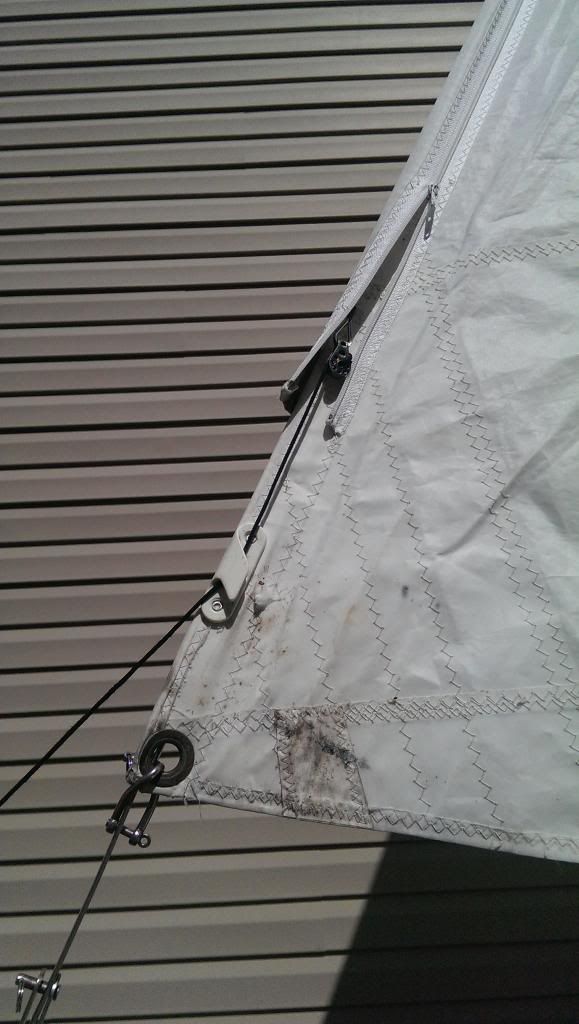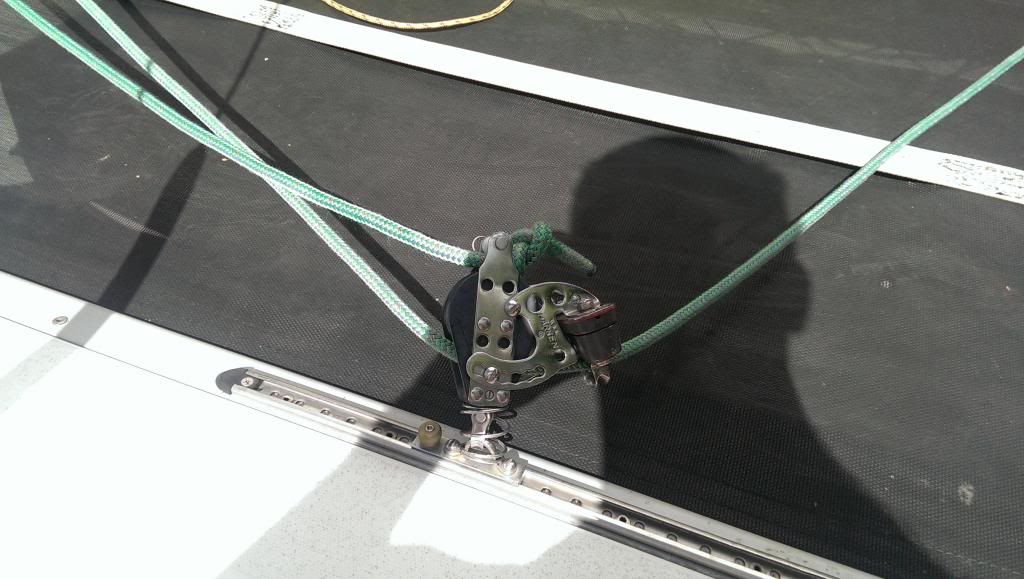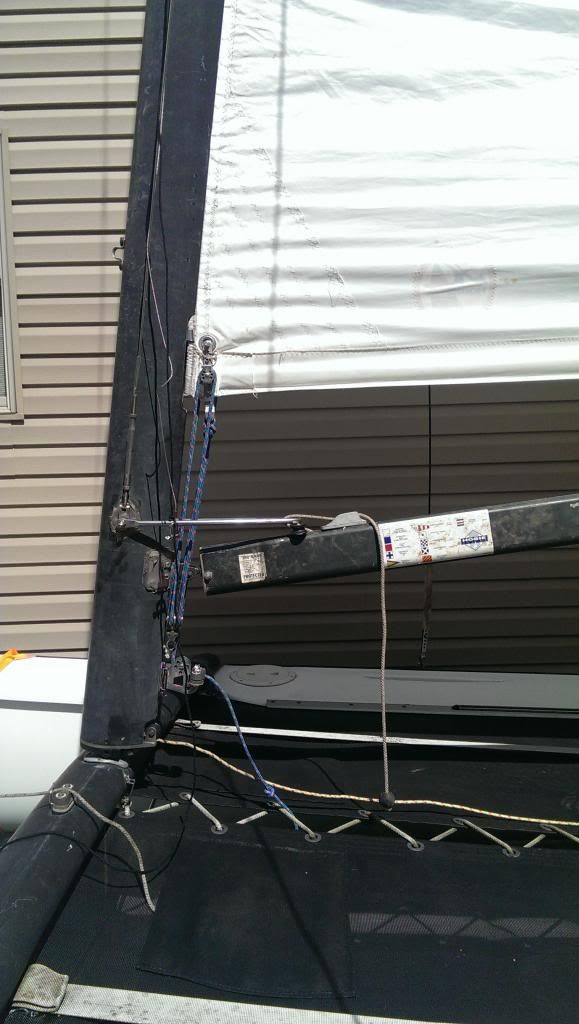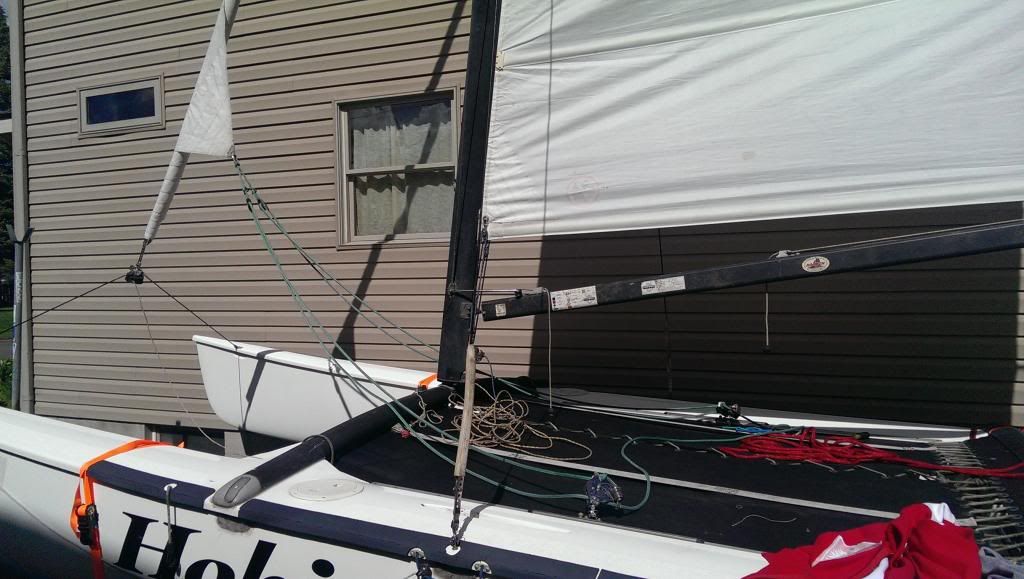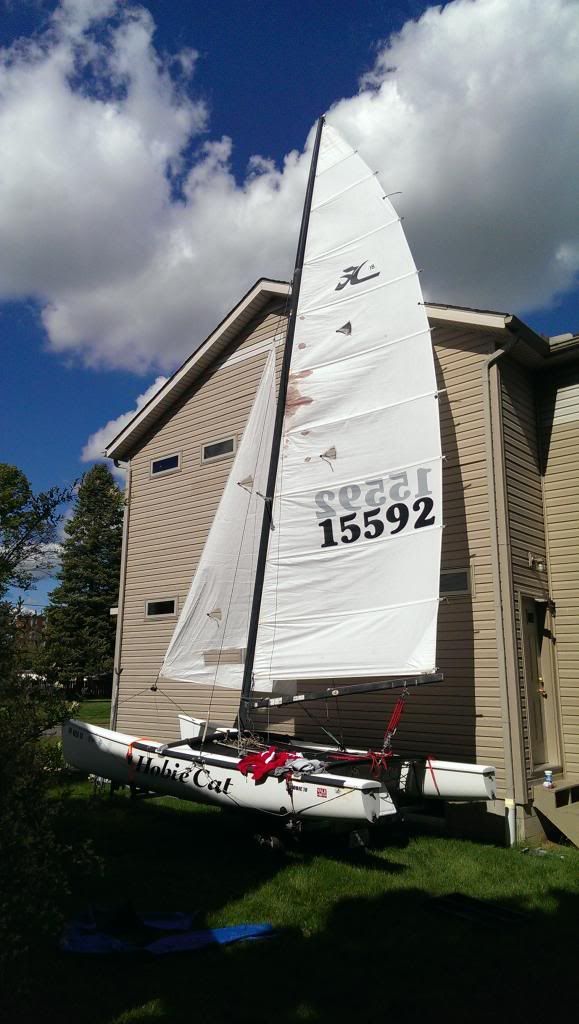Roblox,
That downhaul system is custom, but it looks identical to one used by centralmichigansailor in his newly assembled H18. It may be helpful to scroll through his post, it may help clear some other things up, and the pictures are gorgeous. Here's the page with the downhaul:
viewtopic.php?f=13&t=36064&start=30You've gotta be careful when you step the mast to keep the jib halyard within reach, otherwise you have to pull the mast down or tip the boat on it's side (on the beach) to retrieve it. Sometimes when stepping the mast, shackles get "stuck" in the "wrong" orientation... just have to try and jiggle them loose or make sure it's all lined up right before you lift it.
I also agree with srm, ditch the pulley on the mast rotator. The line should go from the boom, through the v notch at the end of the mast rotator and back to the boom (through the jam cleat).
If the main halyard is exceptionally difficult to hoist, check the sheaves at the bottom and top of the mast. Mine had worn and were no longer rotating. You can also spray silicone lubricant in the mast track... just don't use a greasy lubricant.
All in all, not bad for a first setup. That's about how mine went. After a few times, you'll be amazed at how much simpler the whole thing seems to rig or de-rig. It's still time consuming, though. Trailer to water time is ~45 minutes for me at best.
Mast up storage is fine, if you have a beach or shoreline that you can keep it up, do it. You can be on the water in minutes! Most Hobie fleets have mast up storage for the boats on the beach. It's really the way they were meant to be stored, as long as it's not too exposed (lightning).







